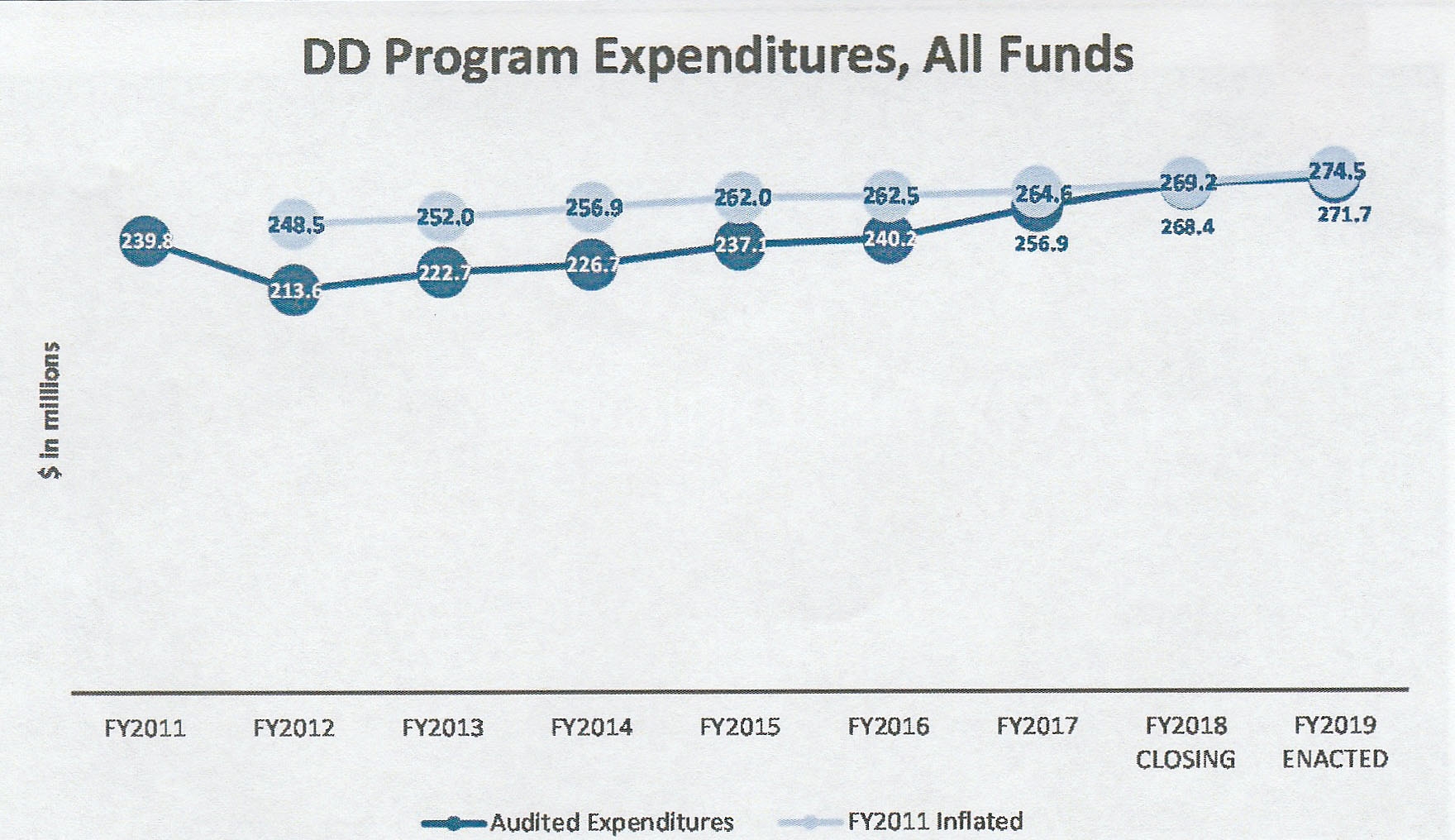R.I. Tightens Controls In Wake Of Embezzlement Of More Than $220K In DD Client Funds
/By Gina Macris
See correction at end of article
A now-deceased Rhode Island state employee embezzled a total of $220,602 from a checking account held in escrow for residents of the state-run group home system, the state’s Office of Internal Audit has reported.
The employee, Kevin B. Ward, died Nov. 26 at age 60, a few weeks after the State Controller flagged a suspicious transaction from the client checking account Ward controlled on behalf of residents of RICLAS, or Rhode Island Community Living and Supports, a part of the Department of Behavioral Healthcare, Developmental Disabilities and Hospitals (BHDDH)..
Rhode Island State Police investigated a suspicious death of a BHDDH employee last November that was ruled a suicide, according to a statement a state police spokeswoman made to the Providence Journal Dec. 13.
On April 8, the spokeswoman, Laura Meade Kirk, said State Police could make no additional comment apart from the fact that its investigation closed without criminal charges.
State officials have described the situation involving Ward’s death as tragic
“While no RICLAS program recipients were directly affected, this is a tragic situation for many of our state employees who knew and worked with the late Kevin Ward,” said BHDDH director Rebecca Boss after the state Office of Internal Audit completed its report April 3. Ward had been a financial manager for RICLAS from February, 2005 until his death.
The state has made good on the funds belonging to the RICLAS residents and has recouped more than $70,000 from its insurance company, according to a spokeswoman for the Office of Management and Budget (OMB). The state also is exploring legal avenues to recover the rest of the money.
The suspicious activity was discovered Nov. 2 by the state’s Controller, who, along with the Treasurer’s Office, was in the midst of a broader effort to tighten internal controls over the custody of state-owned checking accounts, the director of the Office of Internal Audit, Dorothy Pascale, wrote in an April 3 memo to Boss.
The OMB spokeswoman, Brenna McCabe, elaborated:
Since November, the state’s Office of “Accounts and Control has worked with our finance units across all agencies to implement and reinforce measures to help prevent this from happening again.”
Among other oversight and control measures, she said, new rules require two persons to sign checks and prevent those who signed the checks from cashing them.
Ward had been authorized both to sign and cash checks on behalf of the State of Rhode Island.
According to Pascale’s memo, Ward transferred money from the RICLAS’ residents’ account to another, long-dormant, state-owned RICLAS checking account at Bank of America, and from there, to his own Citizens Bank checking account.
Ward had complete control over the Bank of America account that paid directly into his own Citizens Bank account. He even received the account statements from Bank of America.
Pascale said investigators found records of 21 checks totaling $220,602 payable to Kevin B. Ward that were deposited in Ward’s Citizens Bank checking account from August, 2011 to November, 2018. The check that triggered the investigation had been made out to Ward for $4,500 on June 20, 2017 but was not spotted for more than 16 months.
On August 1, 2011, the state-owned Bank of America account had a balance of $38,476, but the bank does not retain records longer than seven years, so investigators were not able to gather evidence of account activity prior to that date, Pascale said.
Ward skimmed funds from a client account containing social security-related income used to help pay for the state’s cost of operating RICLAS facilities, in effect serving as contributions toward room, board, utilities and the like.
An earlier version of this article incorrectly described the purpose of the client account.













